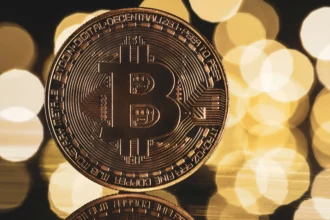Few organizations in human history have sparked as much intrigue, myth, and speculation as the Freemasons. Often associated with secret rituals, powerful networks, and enigmatic symbols such as the square and compass, the Freemasons are one of the oldest fraternal organizations in the world. But behind the veil of mystery lies a complex, centuries-old institution built on philosophy, morality, and fellowship.
To understand who the Freemasons are and what they do, one must separate fact from fiction — exploring their origins, structure, beliefs, and modern-day influence.
The Origins of Freemasonry
Freemasonry’s roots trace back to the medieval stonemason guilds of Europe, particularly those active during the construction of cathedrals and castles in the 13th and 14th centuries. These skilled builders organized themselves into lodges — groups that regulated the craft, set standards, and trained apprentices.
As cathedral-building declined in the 16th and 17th centuries, these lodges gradually began admitting members who were not operative stonemasons but rather “speculative” masons — men of intellect, science, and philosophy who used the symbolism of the stonemason’s craft as a moral framework for personal development and ethical living.
In 1717, the formation of the Grand Lodge of England marked the official beginning of modern Freemasonry. From there, lodges spread across Europe and the Americas, influencing intellectual, political, and social life along the way.
The Structure of Freemasonry
Freemasonry is organized into local lodges, each operating under the jurisdiction of a Grand Lodge that governs a specific region or country.
- Lodges: The basic unit of organization where members meet regularly.
- Grand Lodge: The governing body that oversees all lodges within its territory.
- Degrees: Freemasonry operates through a system of degrees — symbolic stages of moral and spiritual development. The three main degrees are:
- Entered Apprentice – the initiate stage, focused on moral awareness.
- Fellow Craft – symbolizing education and intellectual growth.
- Master Mason – representing wisdom, self-mastery, and understanding.
Beyond these three degrees, there are appendant bodies such as the Scottish Rite, York Rite, and Shriners, which offer further teachings and charitable missions.
Core Principles and Beliefs
Despite its reputation for secrecy, the philosophy of Freemasonry is not hidden. The fraternity promotes three core principles:
- Brotherly Love – Promoting unity, respect, and compassion among members.
- Relief (Charity) – Helping those in need through philanthropy and service.
- Truth – Pursuing moral and spiritual integrity.
Freemasonry is not a religion but requires belief in a Supreme Being, referred to as the “Great Architect of the Universe.” Members come from all faiths — Christian, Jewish, Muslim, Hindu, and others — and are encouraged to practice their religion sincerely.
Masonic teachings use allegory and symbolism drawn from architecture — tools like the compass and square serve as metaphors for ethical conduct and self-discipline.
Secrecy, Symbols, and Rituals
The secrecy surrounding Freemasonry has long fascinated outsiders. Members are bound by oaths not to reveal the fraternity’s rituals, signs, or passwords, which serve as modes of recognition and as symbolic lessons.
Some of the most recognizable Masonic symbols include:
- The Square and Compass: Represents morality and balance.
- The Letter “G”: Often interpreted as “God” or “Geometry,” signifying divine order.
- The All-Seeing Eye: A symbol of divine watchfulness and conscience.
Masonic rituals — which include initiations, moral lectures, and symbolic ceremonies — are designed to teach ethical lessons and foster introspection.
Freemasonry’s Role in History
Throughout history, many influential figures have been Freemasons. Prominent members include George Washington, Benjamin Franklin, Wolfgang Amadeus Mozart, Winston Churchill, and Voltaire. Masonic lodges were often hubs of enlightenment thought, promoting reason, tolerance, and liberty.
The fraternity played a notable role in the Age of Enlightenment and the American Revolution, where ideas of freedom, equality, and fraternity mirrored Masonic principles.
However, Freemasonry has also faced opposition and conspiracy theories. The Catholic Church historically condemned it for its secretive nature and religious pluralism. Political powers — from Nazi Germany to Communist regimes — banned Freemasonry, often portraying it as a subversive organization.
Freemasonry in the Modern World
Today, Freemasonry continues to exist in almost every country, with an estimated 6 million members worldwide, though membership has declined from its 20th-century peak.
Modern Freemasons engage in:
- Charity work: Supporting hospitals, scholarships, and disaster relief.
- Community building: Promoting civic engagement and volunteerism.
- Personal development: Encouraging education, reflection, and moral improvement.
Freemasonry’s influence today is less political and more humanitarian. Lodges function as places for men (and, in some branches, women) to develop ethical awareness, fellowship, and a sense of purpose in a fragmented modern society.
Conspiracy Theories and Misconceptions
Freemasonry has been at the heart of countless conspiracy theories — accused of controlling governments, manipulating finance, and influencing world events. The use of secret symbols, esoteric rituals, and connections among elite members have fueled these suspicions.
However, historians generally agree that these claims are exaggerated or unfounded. Freemasonry’s real “power” lies not in global domination but in its network of members devoted to mutual respect, knowledge, and philanthropy.
Conclusion
The Freemasons are neither an occult cabal nor a relic of the past. They represent a centuries-old tradition of moral philosophy, symbolism, and community service. Their enduring appeal lies in the universal human search for meaning, truth, and brotherhood.
In an age where society feels increasingly divided, the Freemasons continue to offer a framework — both symbolic and practical — for self-improvement and unity. Whether viewed as a secretive brotherhood or a moral fraternity, Freemasonry remains one of the most intriguing and enduring institutions in human history.










